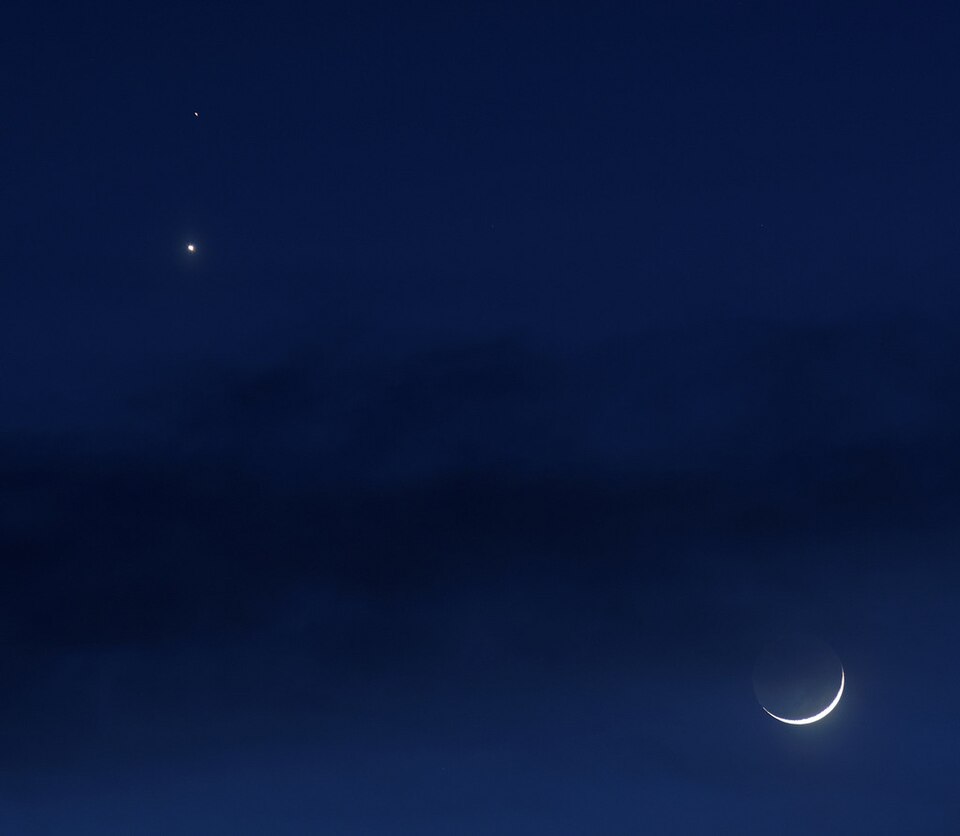Skywatchers Alert: Moon-Mars Conjunction and Meteor Showers on July 28

On July 28, 2025, skywatchers around the globe will have the opportunity to witness a remarkable celestial event: a conjunction of the moon and Mars, alongside two meteor showers peaking that night. This astronomical display will be visible shortly after sunset, creating an ideal occasion for stargazers to observe and appreciate the wonders of the night sky.
The moon and Mars will be positioned low in the western sky at approximately 45 minutes after sunset. The conjunction will feature the crescent moon, illuminated at 19%, located slightly below and to the left of the distinctly reddish Mars. The event will be visible for about an hour before both celestial bodies set below the horizon, making a clear view of the western skyline essential for optimal viewing.
Dr. Emily Watson, an astronomer at the University of California, Berkeley, emphasized the significance of this event, stating, "Conjunctions like this are rare opportunities for the public to engage with astronomy. It’s a beautiful sight, especially when combined with the meteor showers on the same night."
The moon will exhibit a phenomenon known as Earthshine, where sunlight reflects off Earth and illuminates the moon's night side. Observers may use binoculars to enhance their viewing experience, as they can help in scanning the sky for both the conjunction and the subsequent meteor showers.
Later that evening, stargazers can look forward to two meteor showers peaking: the Southern Delta Aquariids and the Alpha Capricornids. The Southern Delta Aquariids are expected to produce up to 25 meteors per hour, while the Alpha Capricornids will contribute around five meteors per hour, albeit with the potential for bright fireballs, according to the American Meteor Society. This convergence of events presents an exceptional night for those interested in astronomy and stargazing.
"The conditions on the night of July 28 are particularly favorable for viewing," noted Dr. Alan Peters, a meteorologist at the National Weather Service. "As long as weather conditions are clear, this will be a fantastic opportunity to witness both the conjunction and the meteor showers."
For those whose views are obstructed by clouds, it is advisable to check the skies again the following night, July 29. The moon will still be visible, now illuminated at 27%, positioned alongside Mars. This provides an additional chance to engage with the celestial display if the first night is hindered by weather conditions.
Mars has been a prominent feature in the night sky since its opposition on January 16, 2025, and will remain visible shortly after sunset until late November when it fades into the sun’s glare. The next opposition for Mars is anticipated on February 19, 2027, when it will be at its closest approach to Earth once again.
In summary, the July 28 moon-Mars conjunction, combined with the peak of two meteor showers, offers a unique opportunity for skywatchers to connect with the cosmos. As Dr. Watson concluded, "Events like this not only inspire wonder; they also educate and encourage interest in astronomy and science among the general public." With favorable weather and clear skies, this night promises to be a memorable occasion for all astronomy enthusiasts.
Advertisement
Tags
Advertisement





